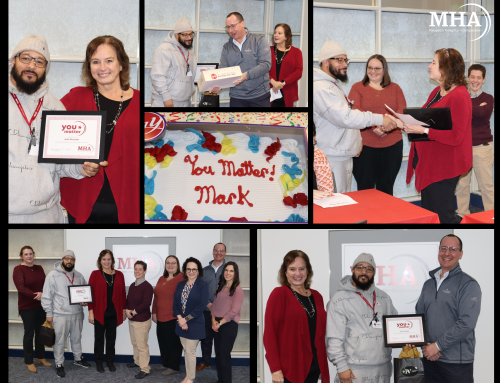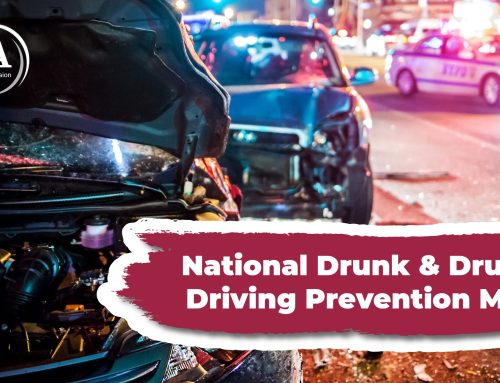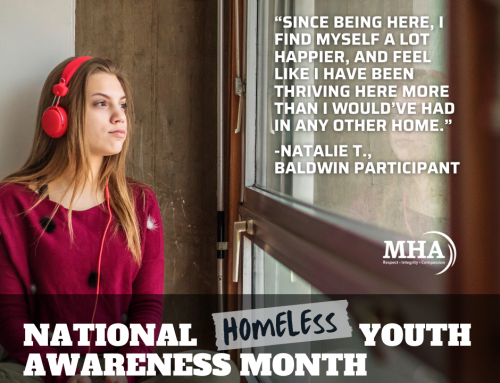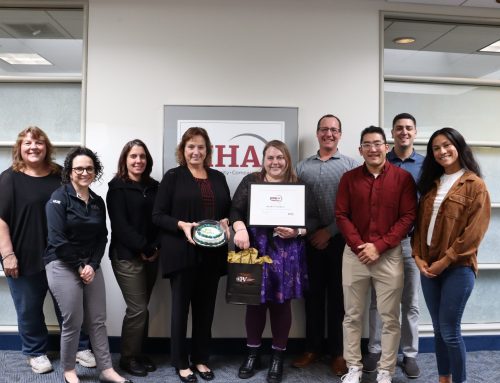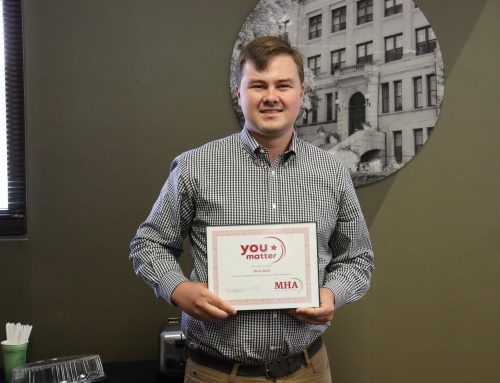
By her own admission, Sheila Maldonado was pretty down and out when she entered MHA’s Safe Haven program that offers transitional shelter for adults dealing with chronic homelessness and a mental health diagnosis. For some Safe Haven residents, substance use is also a long-time issue.
Today, she is on a different path, sharing her story to offer hope to others as she draws strength from the program’s support and her own determination to be healthy in mind, body and spirit after years of abuse and life on the street.
Sheila credits the availability of the 24/7 residence’s staff, particularly Samantha Gulsvig, with helping her process her life experiences and learn to channel strong emotions and the skills she has as someone who likes to work with her hands and be “crafty” into a productive path forward.
“Here I am able to work on getting my life settled and having a home,” Sheila said. “I am learning to cope, think over what I am going to do and not get stuck in anger.”
Samantha said Sheila has “come a long way” in developing her skills, learning to be mindful about choices and trusting she has the resilience and ability to safely navigate a better life for herself.
“She is actually one of the few people we get who did not come from shelter experience, but who actually lived on the street for eight straight years in survival mode, whether that be sleeping in hallways, abandoned buildings, in tent cities, underneath church steps, just finding survival,” Samantha said. “Eight whole years Sheila did this without using the shelter system which was more fearful for her.”
She added that Sheila arrived at Safe Haven “still in fight and fright mode.”
“She had a lot of anger issues and no ways to cope with them,” Samantha said. “You have to be strong and prepared to fight on the street. You have to have that mentality that someone is going to hurt you.”
Samantha said the Sheila that has emerged at Safe Haven “is pleasant and funny, and so loving and compassionate to other people.”
“When she first came, she couldn’t even leave the house. She is able to get out to stores now,” Samantha said. “She has thrown herself into her artwork, blessing people with it and herself. She has found calmness and strength in doing her art and utilizing this as a coping skill. She is in a place where she can do this and focus on something other than survival. She always knew she was resilient, and now she has this safe space where she can learn what she loves to do. She has, a Safe Haven.”

